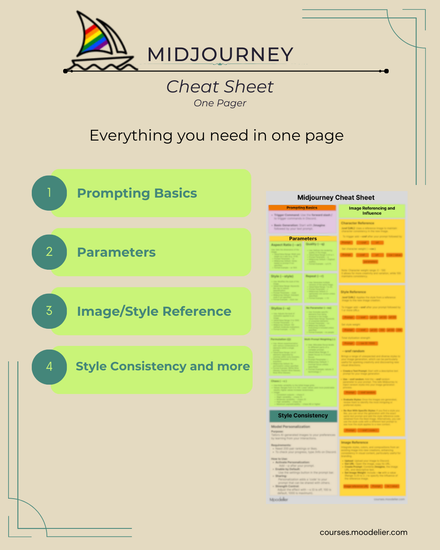While I try to keep from using generalizations, one thing is certain: I work with a lot of friends. At the beginning, friends became business partners. Then, I started to see a reversal - not only was I working with friends who became business partners, I was also partnering with people who became friends. In other words, it was all the perfect situation for blurry lines and ambiguous boundaries. Whoops. Now, I believe in the power of working with friends. I believe that we connect with those we trust. Personally, I tend to surround myself with others who push me to be better, to think deeper and try new things. When pairing that dynamic with a business relationship, we have this rare and beautiful opportunity to grow, both as a business, and as individuals. So, my friend - I’m here today to tell you that yes, you can work with your friends, and no, you don’t have to run for the hills. ...Unless you don’t set the stage for a solid work relationship with healthy boundaries that you actually stick to, of course. In which case, you should run for the hills. I’m here to say that I’ve had the honor and privilege of successfully working with friends for years now, and I wouldn’t have it any other way. Is it sticky and sometimes kind of difficult? Yes. But as with any relationship worth having, the going gets tough… and the tough get better. I’ve got three major tips to share with you today on the art of setting and keeping professional boundaries with friends. Care to join me?

" I can tell you that having those unbiased, completely objective goals in place can help reset and realign the relationship if and when things get touchy, or blurred. "
Understand each other’s workflow, and coordinate
For some reason, we have the tendency to befriend those who are somewhat opposite us in some of the more crucial facts of life. As an example, I’m an early riser, and someone who thrives while working in a structured environment. I function well through written communication.
My friends and business partners? They’re the opposite. They tend to like to sleep a bit later than me (which isn’t late by a long shot), and many times work in a more fluid state. Some of them prefer workshopping via Google Meet, instead of going back and forth over email and a shared Google Doc.
Does that mean that we shouldn’t work together? Of course not - it just means that we have more tools to play with, and a greater opportunity to try things that we might have otherwise skipped.
Before you start a partnership with a friend, have an initial meeting where both of you bring your work styles and needs to the table. Discuss how you both operate well - talk about your individual work hours. Then, create your own schedules, and then maybe a shared one, too.
Of course, if you’re a freelancer, you can’t (legally) be confined to a schedule. What I really mean is: you can tell your friend that you like working during ___ hours, and plan to do so. Your friend can say the same for themselves. Then, maybe you choose a time for a weekly workshopping call, or deadlines for content, ideas or work, so that you both always have a timeline and structure to refer to.
The most important thing to remember is that working with a friend does not mean that you lose your sense of self. Allowing that to happen will not only hurt you, it’ll hurt your brand - because you’ll both be operating as less than your best selves.
So, share your work styles, then coordinate to find a happy medium to make sure deadlines aren’t missed, projects are complete, and both of you are happy little clams.
Do what’s best for the brand, not your ego
So, yes, it’s important that you both are happy little clams, as I mentioned above. But that shouldn’t come at the expense of the health and success of your brand.
It’s easy to want to look at your partnership with your friend as a never-ending party… but never-ending parties don’t pay the bills, or get goals met. You should absolutely have fun while working together, but one question should always be top of mind: what’s the best thing for our brand?
Regardless of your friendship, the baggage you bring to your relationship, your previous successes and accolades or your feelings on any given day, one thing should always, always trump it all: the embetterment and growth of your brand.
The embetterment and growth of your brand will look different than anyone else’s. So, set goals (together), for that first year, and then break things down into smaller monthly goals. You can then divide the work to reach those monthly and yearly goals accordingly.
Through personal experience, I can tell you that having those unbiased, completely objective goals in place can help reset and realign the relationship if and when things get touchy, or blurred. There will be days where your friend might seem like they’re slacking off - rather than saying, “hey, you’re slacking off,” you can now use that monthly goal to touch base with them. “How are things going with ____?” or “Where are you at with ____?” sounds entirely different, and can be a great way to keep the emotion out of those conversations.
Remain objective, and look at things in the same way that a coach might look at a team. That coach will sometimes say the things that feel really uncomfortable to say and hear, but they always, always do it with one goal in mind: the success of the team. There will be days where those teammates absolutely hate the workouts and extra running they have to do, and then there will be incredible days where the coach’s neurotic demands happen to pay off (say, at the final game or competition). Suddenly, that coach becomes everyone’s favorite person.
You and your friend should be the coach AND teammates of your business. Treat your goals as the coach, and yourselves as the team.
" Set expectations at the end of every workshop or call. "
Use your tools
There are 6 boundary-setting tools I recommend that everyone use - regardless of whether they’re working with friends or not.
In the context of partnering with friends, though, these tools can be a great and nonaggressive way to constantly remind one another of your agreed upon boundaries.
Many times, boundaries are overstepped by accident - your friend might completely forget that you’re off work for the day, and send you a question about your project. Rather than having to have the awkward conversation of, “hey, I’m not working right now,” again, it’s good to have some automated and simple tools in place to better manage those expectations.
- Never, ever conduct work via text.
Put a rule in place to keep your work communication to email or Slack only - and then stick to it! This’ll allow you to continue to enjoy your friendship as you normally would, while seamlessly switching to professionalism the moment you turn on your computer.
- Add your office hours to your email signature.
Yes, seriously. This has been, by far, the most loved and followed tip I’ve ever shared. Use your email signature to your advantage! Under your name, you can put something as simple as “Office hours: Monday-Thursday, 7AM - 3PM.”
This is an excellent practice to keep in place for all clients, not just friends who become clients.
- Set your OOO message every weekend.
I work Monday-Thursday. Every Friday, I have my out of office reminder on and set through the following Sunday. It has a quick and simple message reminding those that email me that I’m away from my desk, and will respond to emails on Monday.
It’s a simple tool, but one that’ll be a game-changer for your professional relationship and boundaries.
- Set expectations at the end of every workshop or call.
Both of you should keep notes when you have meetings, or calls. Write down all of the deadlines and projects you both discuss, and then share those notes via email with one another.
Before you get off your calls, though, make sure to summarize and realign with one another. Something as simple as, “okay, I’ll get that piece of content to you by Friday afternoon!” will really help your friend and partner, and vice versa.
- Always follow up in writing.
Whether you two have a sticky conversation, or just a normal, run of the mill meeting, always make sure you follow up your conversations with a quick email summarizing what you two discussed.
This might feel ridiculous, especially if you two are super close - but after a while, it’ll feel natural and inherent to the success of your brand.
If you’re asking why those notes might be important, think of it this way: if there’s ever a case of “no, but you said THIS,” you both will have unbiased, easy to read notes to refer back to. We’re all about avoiding unnecessary conflict here, whenever possible!
- Don’t be afraid to repeat yourself.
If your friend/business partner ever mistakenly asks for help or work during your time off, just be yourself, while putting your foot down. Saying something like, “Sure! I’ll take a look when I’m back in tomorrow/Monday,” is a harmless and foolproof way to gently remind your friend that your schedules might differ, but that doesn’t mean their needs are any less of a priority.
Ultimately, have fun, and prepare for the best… and the worst.
With great friendships come great trials, and in great businesses, come even more trials… I think I’m supposed to say something uplifting and encouraging here, so let me backtrack.
Working with your friends can be an incredible way to better your business and brand. It can be rewarding, heartwarming and challenging… and it can also feel really, really difficult.
As with any relationship, it’s worth the highs and lows - as long as the highs overshadow the lows. Set your boundaries, stick to your structure, and most importantly - have fun.
About the writer
I’m Kirsten, and I’m notorious for my love of writing long-winded, passionate and helpful articles for freelancers and creative entrepreneurs.
I’m a dog mom, wife and the owner of Alway Services, where I provide business relief to creative entrepreneurs, in the form of long-term and project-based copywriting, community building, sales and marketing strategy, as well as 1:1 strategy sessions.
I’ve created three workbooks with email templates for your every need. Whether you’d like to finesse your Cold Emailing strategy, Build Boundaries or learn how to Overcome Objections, I’m here to help.
Thanks for reading!
Photo: Anna- alexia Basile and Claire Xue









New Comment